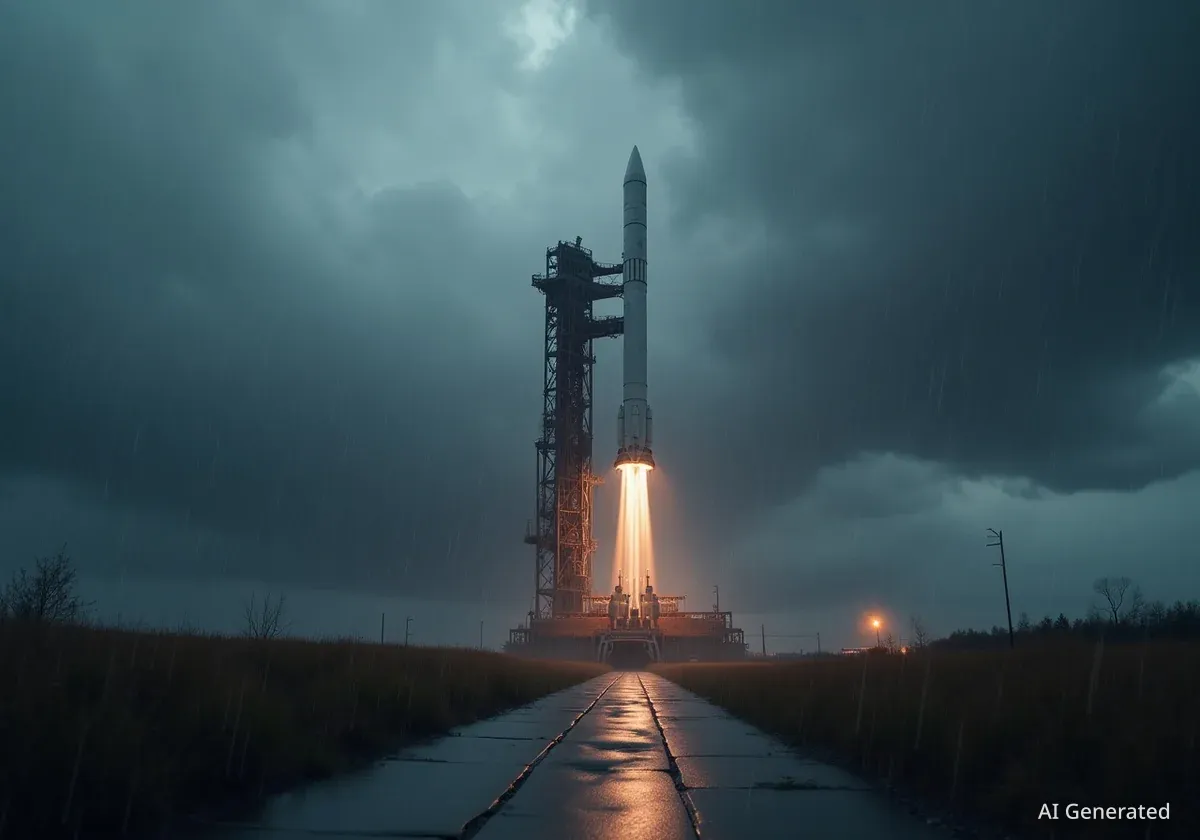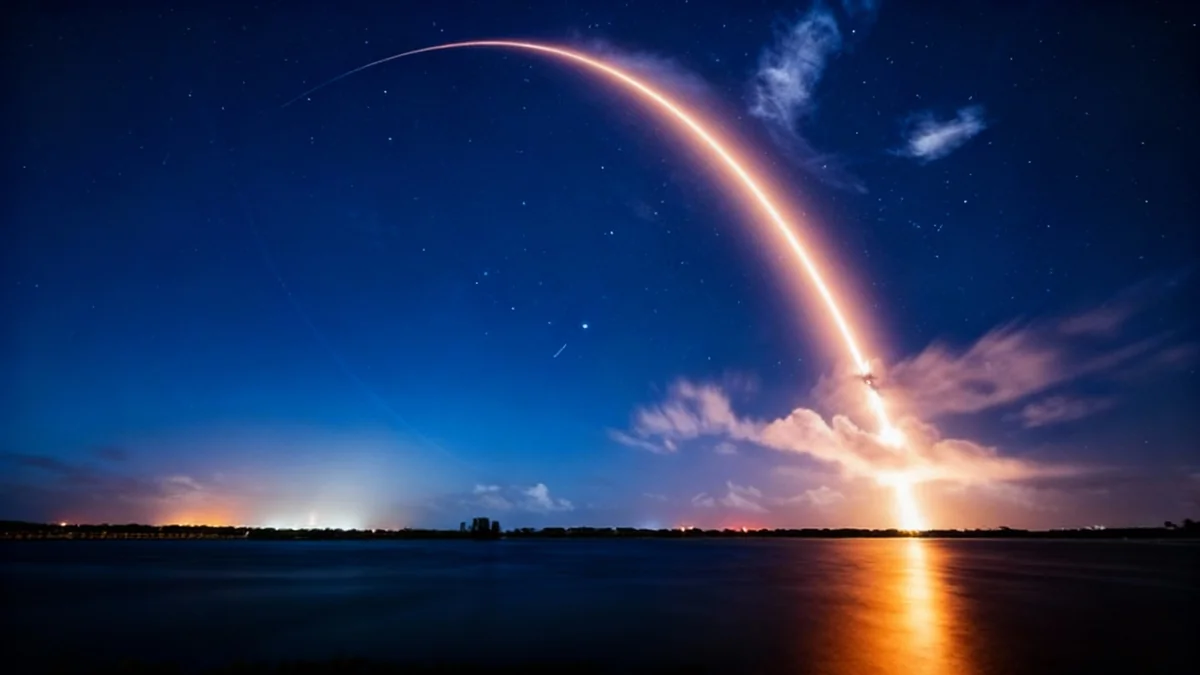SpaceX has once again delayed the launch of a Falcon 9 rocket carrying prototype satellites for Amazon's Project Kuiper. The mission, originally scheduled for last week from Cape Canaveral, Florida, is now targeting Monday. This marks the third postponement for the high-profile mission aimed at deploying internet-beaming satellites.
While SpaceX has not issued a formal statement explaining the repeated delays, unfavorable weather conditions in the Atlantic Ocean are believed to be the primary cause. The Falcon 9's first-stage booster is scheduled for a sea landing, a procedure that requires calm waters for the recovery vessel to operate safely.
Key Takeaways
- SpaceX postponed its Falcon 9 launch for Amazon's Project Kuiper for the third time.
- The new launch target is now set for Monday from Cape Canaveral, Florida.
- The unofficial reason for the delays is rough sea conditions in the Atlantic Ocean, which would affect the booster landing.
- The mission involves deploying the first prototype satellites for Amazon's planned broadband internet constellation.
A Series of Launch Scrubs
The mission has faced a series of setbacks since its initial target last week. The first launch attempt was scheduled for Thursday, October 9, but was called off. Subsequent attempts over the weekend were also scrubbed, leading to the new target of Monday.
SpaceX maintains a rigorous pre-flight checklist, and launches are often postponed for a variety of reasons, including technical issues with the rocket or payload, and unfavorable weather at the launch site or in the booster recovery zone.
Understanding Launch Delays
Launch postponements, often called "scrubs," are a common occurrence in the space industry. Safety is the top priority, and mission controllers will not proceed with a launch unless all conditions are optimal. This includes weather, technical readiness of the vehicle, and the status of downrange recovery assets.
Weather Conditions a Likely Factor
The primary suspect behind the recent postponements is a persistent nor'easter weather system that has been affecting the U.S. East Coast. This system has created high winds and rough seas in the Atlantic Ocean, directly impacting the booster recovery zone.
The Falcon 9 rocket is designed with a reusable first stage that performs a controlled descent after separating from the upper stage. For this mission, the booster is slated to land on the autonomous droneship named "A Shortfall of Gravitas," which would be positioned several hundred miles offshore.
For a successful landing, the droneship must remain stable. High waves and strong winds can make it impossible for the booster to land safely and for recovery crews to secure it. According to mission parameters, sea conditions are as critical as the weather at the launch pad itself.
The Importance of Booster Recovery
SpaceX's ability to recover and reuse its Falcon 9 first-stage boosters is central to its business model. This reusability significantly reduces the cost of access to space, allowing for a higher launch frequency. Each successful landing and recovery saves tens of millions of dollars.
Mission Profile and Payload
Amazon's Project Kuiper
This launch is a critical first step for Amazon's ambitious Project Kuiper. The mission's payload consists of two prototype satellites, Kuipersat-1 and Kuipersat-2. These initial satellites will allow Amazon to test the technology and network infrastructure for its planned constellation of over 3,200 satellites in low Earth orbit.
Project Kuiper aims to provide high-speed, low-latency broadband internet to unserved and underserved communities around the world. The project is a direct competitor to SpaceX's own Starlink satellite internet service, which already has thousands of satellites in orbit.
"This is Amazon's first time putting satellites into space, and we’re going to learn an incredible amount regardless of how the mission unfolds." - Rajeev Badyal, Project Kuiper’s vice president of technology.
The successful deployment and testing of these prototypes are essential for Amazon to validate its satellite design, including the antennas, modems, and power systems that will be used in the final constellation. It will also test the ground-based networking systems that connect the satellites to the internet and to customer terminals.
The Falcon 9 Rocket's Role
The Falcon 9 rocket is SpaceX's workhorse launch vehicle, having flown hundreds of successful missions. Its reliability and reusability have made it the vehicle of choice for numerous commercial and government clients, including NASA and now Amazon.
The flight plan for this mission involves a northeasterly trajectory from Cape Canaveral. After stage separation, the first stage will perform a series of burns to reorient itself and slow its descent before attempting to land on "A Shortfall of Gravitas." The second stage will continue into orbit to deploy the Kuiper satellites.
Looking Ahead to Monday's Attempt
All eyes are now on the weather forecast for the Atlantic recovery zone. A calming of the seas is necessary for SpaceX to proceed with the launch on Monday. Mission operators and weather forecasters will continue to monitor the situation closely.
A successful launch will mark a significant milestone for Amazon as it enters the satellite internet market. For SpaceX, it will be another routine, yet critical, demonstration of its launch and recovery capabilities, even when launching hardware for a major competitor.
The space community and potential customers of Project Kuiper await the outcome of the next launch attempt, which represents a key moment in the expanding commercialization of low Earth orbit and the global effort to increase internet connectivity.





